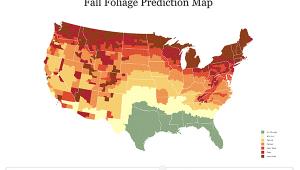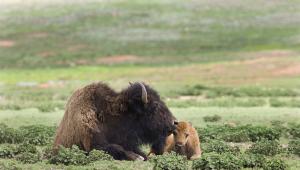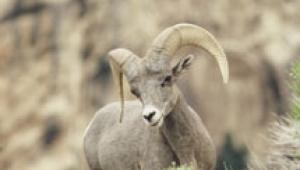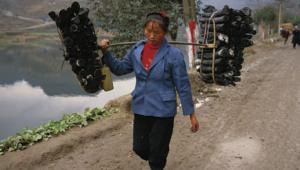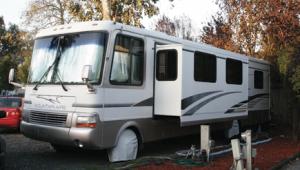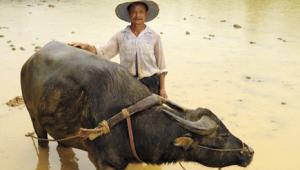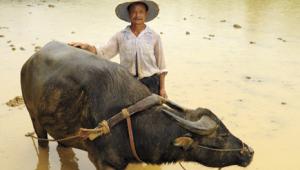Creative Seeing; Visualize The Final Result When You Snap The Shutter Page 2
One of my favorite photography tips is this: The name of the game is to fill the frame. When you fill the frame with the subject and/or subjects, you have less "dead space" in your picture. The less dead space, the more interesting the picture.
To get the entire scene in focus, use a wide angle lens, focus 1/3 into the scene, and select a small aperture. Had I used a wider aperture or a longer lens and focused on the sleeping cowboy or the building, the entire scene would not have been in focus.
Fill The Frame |
 |
Technical info: Canon EOS-1Ds Mark II, Canon 17-40mm lens
at 17mm, 1/60 sec at f/11, ISO 100.
A Sense Of Place
I used to tell my photography students that the background was almost as important
to me as the main subject. Today, I stress that the background is as important
as the main subject--because it gives the subject a "sense of place."
For example, imagine how these cowboys would have looked if I had photographed
them in New York City, or on a beach in Pago Pago. When composing your pictures,
pay careful attention to the background. If it's not right, you may have
to move the subject to a new location. Or, you could darken or blur the background
in Photoshop. You'd lose your "sense of place," but you'd
still have a nice picture.
Of course, you could also use Photoshop's Clone Stamp to fix a distracting
background, or even import a background from another image. But your best bet
is to shoot with a good background in mind.
A Sense Of Place |
|
 |
 |
Technical info: Cowboy with dog--Canon EOS-1Ds Mark
II, Canon 28-105mm lens at 100mm, 1/250 sec at f/5.6, ISO 200. Cowboy silhouette--Canon
EOS-1Ds Mark II, Canon 28-105mm lens at 35mm, 1/125 sec at f/11, ISO 400.
Look For Details
When you are composing a picture, look carefully, very carefully, at all the
elements in a scene to see if they add or detract from the impact of your picture.
Take a look at the picture of the cowgirl on the horse. What makes this picture
interesting is a cowboy's shadow on the horse's rump. Here, I asked
a cowboy to position himself so his shadow fell on the horse. Little touches
like that make the difference between a nice shot and more creative image.
Look For Details |
 |
Technical info: Cowboy--Canon EOS-1Ds Mark II, Canon
28-105mm lens at 105mm, 1/250 sec at f/8, ISO 400. Cowgirl--Canon EOS-1Ds
Mark II, Canon 28-105mm lens at 35mm, 1/125 sec at f/8, ISO 100.
Tell A Story
In addition to being called a "light catcher," you also could be
called a "storyteller," because a successful photograph tells a
story. To help you tell the story with a picture, try to write a caption for
the picture in your mind while you are composing the scene. That process may
help you with your composition and exposure. It may also tell you that you need
to wait for just the right light, or add light with a flash or reflector, or
diffuse light with a diffuser.
Tell A Story |
 |
Technical info: Canon EOS-1Ds Mark II, Canon 100-400mm IS
lens at 300mm, 1/500 sec at f/8, ISO 200.
Rick Sammon has published 27 books, his latest is "Idea to Image in Photoshop
CS2." His latest interactive DVD--"Adobe Photoshop CS2 for
the Portrait and Wedding Photographer"--is the latest DVD available
on www.rickspixelmagic.com.
This info-packed DVD includes 20 lessons that make learning fast and fun. For
more information about Sammon, visit www.ricksammon.com.
- Log in or register to post comments
